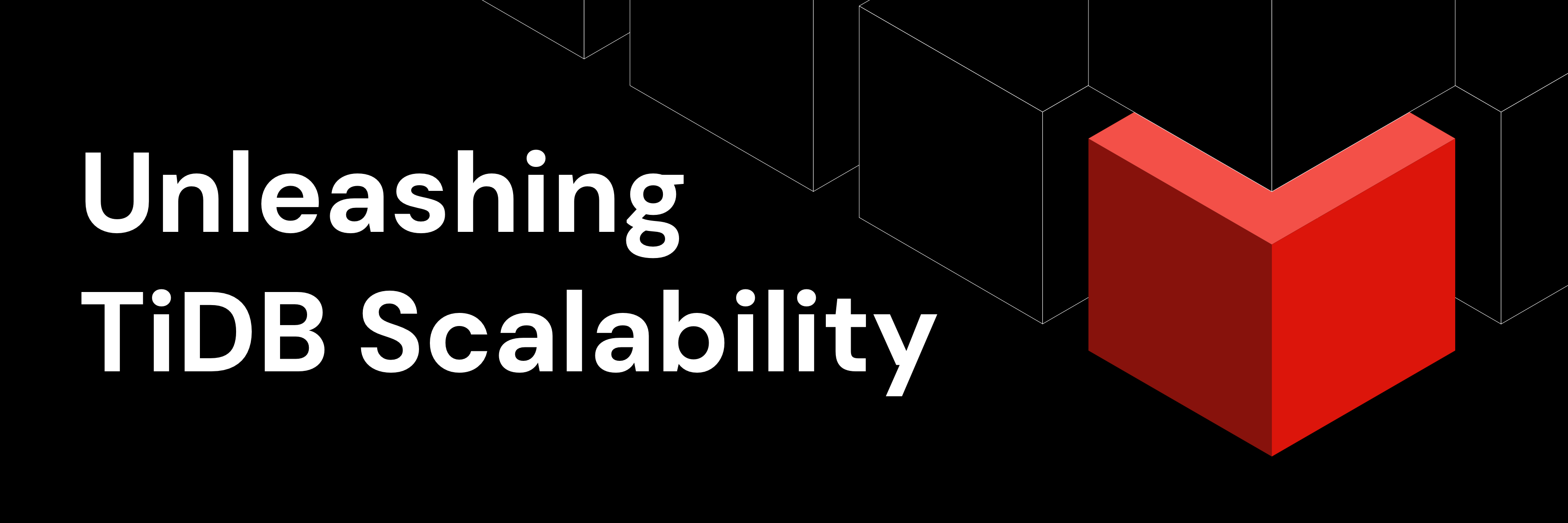
Building a scalable system that’s also future proof has become a critical factor for organizations who want to maintain a competitive edge. At HTAP Summit 2024, PingCAP Software Architect Sunny Bains uncovered the challenges and solutions associated with scaling such complex systems. He highlighted the importance of robust, flexible architectures and showcased how TiDB, an open source distributed SQL database, addresses these challenges effectively.
This blog recaps Bains’ talk from the event. It explores the concepts of scalability, the operational challenges faced by modern systems, and how TiDB provides a future-proof solution for data-intensive applications.
The Fundamentals of a Scalable System
Scalability, as Bains defined, is the ability to expand a system from zero users to millions without compromising the user experience or quality of service. He outlined four key attributes of scalable systems:
- Flexibility: Systems should easily scale up or down based on demand to save costs when resources are idle.
- Performance Stability: Maintaining consistent performance as workloads grow is a major engineering challenge.
- Availability: High availability is non-negotiable in today’s always-on world.
- Ease of Operation: As systems scale, managing operations must remain simple and efficient.
These attributes form the foundation of a scalable architecture that can adapt to evolving business needs without introducing operational complexity.
The Challenges of Scaling Large Systems
Bains described the multifaceted challenges businesses encounter as they scale their systems:
- Growing User Base: With millions of users accessing an application simultaneously, connection management and request handling become increasingly complex.
- Exponential Data Growth: As services expand, the volume of data can grow exponentially, introducing bottlenecks in storage and retrieval.
- Metadata Management: Managing metadata for large-scale systems becomes a critical task, especially during schema changes or migrations.
- Operational Complexity: Multi-region deployments require careful planning to ensure consistency and failover mechanisms. High network latency and inter-node traffic further complicate operations.
Bains shared real-world examples, such as a company taking three months to create an index on a 40 terabyte (TB) table. He emphasized that these are not hypothetical issues but practical challenges faced by enterprises operating at scale.
The Cost of Poor Scalability
From there, Bains outlined the tangible business impacts of failing to scale effectively:
- Service Degradation: A decline in performance directly affects user satisfaction and revenue.
- Operational Overheads: Manual intervention in managing multi-region deployments, failovers, or schema changes increases costs and risks.
- Inefficient Resource Utilization: Scaling inefficiencies lead to underutilized or over-provisioned resources, inflating infrastructure costs.
He stressed that scalable systems must automate tasks such as data redistribution, failover handling, and backup testing to minimize human intervention and associated costs.
TiDB: A Future-Proof Scalable System
TiDB, as Bains described, addresses these scaling challenges through its innovative distributed SQL architecture and advanced capabilities. Key features include:
- Distributed Architecture: TiDB’s disaggregation of compute and storage allows independent scaling, ensuring cost efficiency and flexibility.
- Automatic Data Sharding: Data is automatically distributed across nodes, eliminating the need for manual sharding and reducing application-level complexity.
- High Availability: TiDB employs automated failover and region recovery to ensure uninterrupted service, even during node failures.
- Multi-Region Support: With TiDB, data placement can be optimized to minimize latency and meet regulatory requirements for data residency.
- Seamless Backup and Restore: TiDB supports parallel reads and restores for massive datasets, making disaster recovery faster and more reliable.

Bains also highlighted TiDB’s ability to maintain performance and availability while handling the unique demands of distributed systems, such as inter-node traffic and latency.
Building a Scalable System: Advanced Features for Operational Efficiency
As Bains noted, TiDB stands out for its ability to simplify operations at scale. He also elaborated on features that enhance operational efficiency:
- Rolling Upgrades: TiDB supports rolling upgrades, allowing nodes to be updated without downtime, ensuring full uptime during maintenance.
- Resource Isolation: Background tasks, such as indexing or analytics, are isolated from business transactions to prevent performance degradation.
- Optimized Query Execution: TiDB’s query pushdown mechanism minimizes inter-node communication, improving performance for distributed workloads.
Bains shared performance metrics from a TiDB cluster handling a 40 TB dataset, where indexing time was reduced from 14 hours to just one hour. This example demonstrates TiDB’s ability to handle large-scale operations efficiently.
Overcoming Common Scaling Pitfalls
Next, Bains provided insights into common scaling pitfalls and how TiDB mitigates them:
- Schema Changes: TiDB supports online schema changes, reducing downtime and operational complexity.
- Data Redistribution: When adding new nodes, TiDB automatically redistributes data, ensuring even utilization without manual intervention.
- Disaster Recovery: TiDB’s distributed backups and restores provide robust disaster recovery options, even for petabyte-scale datasets.
Bains emphasized the importance of testing backups and highlighted TiDB’s parallel restore capabilities as a key advantage for enterprises handling massive data volumes.
The Future of Scalability with TiDB
Bains wrapped up his presentation by outlining the scalability characteristics organizations should drive towards:
- Horizontal Scaling: As nodes are added, systems should scale linearly in terms of throughput and storage.
- Stable Latency: Query and network latency should remain stable, regardless of data volume or node count.
- Cost-Effective Growth: Scaling should only increase infrastructure costs, not operational complexity or user experience issues.
As discussed throughout this blog, TiDB exemplifies these principles with its disaggregated architecture, efficient resource utilization, and robust failover mechanisms.
Conclusion
Bains’ session underscored the critical role of scalability in modern systems and the need for future-proof architectures that minimize operational complexity.
As businesses face ever-growing demands, TiDB provides the tools to scale efficiently while maintaining performance, availability, and cost-effectiveness. For organizations seeking to modernize their infrastructure, TiDB represents a powerful step forward in achieving scalability and future-proofing at scale.
Want an actionable way to evaluate scalability across multiple systems? Register to watch this entire session from HTAP Summit 2024 for additional insights. Happy viewing!
HTAP Summit 2024 session replays!
TiDB Cloud Dedicated
A fully-managed cloud DBaaS for predictable workloads
TiDB Cloud Starter
A fully-managed cloud DBaaS for auto-scaling workloads



